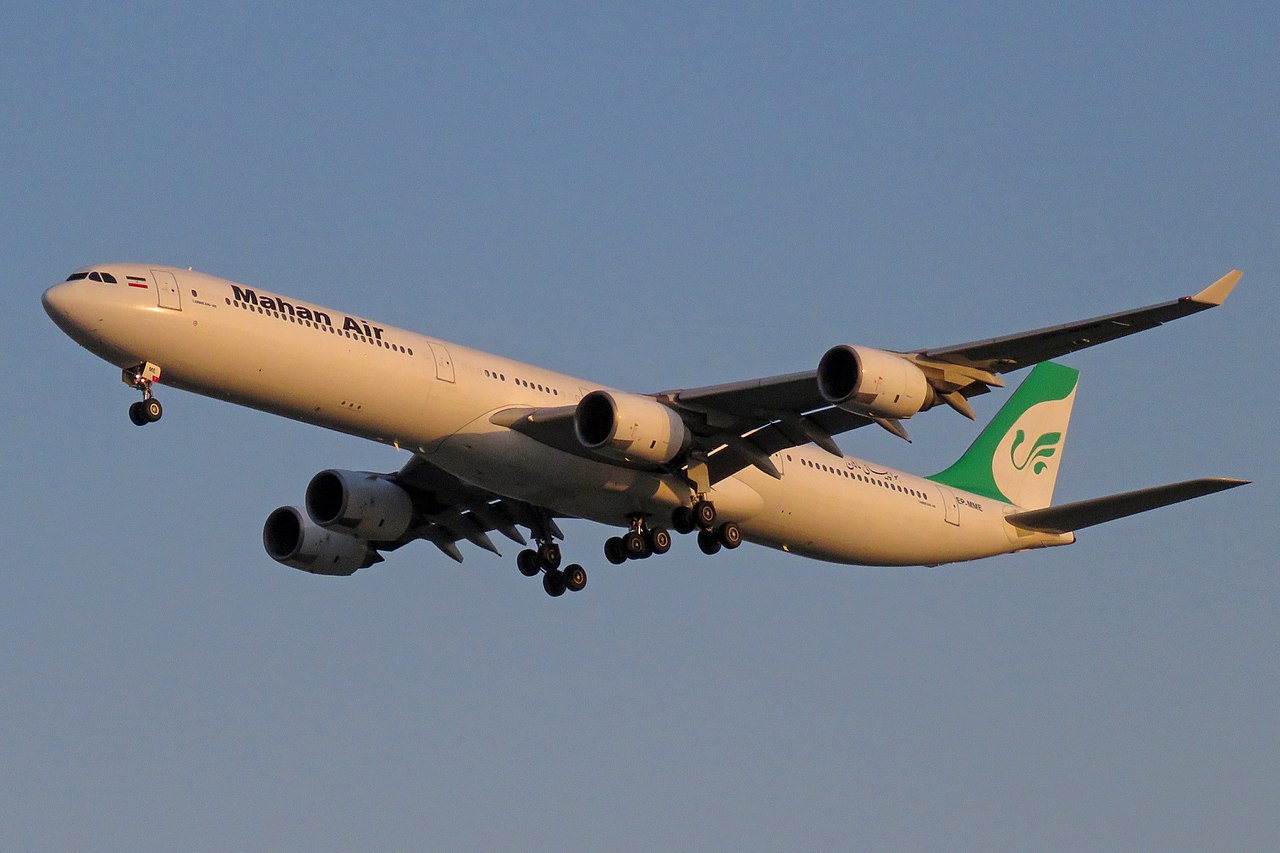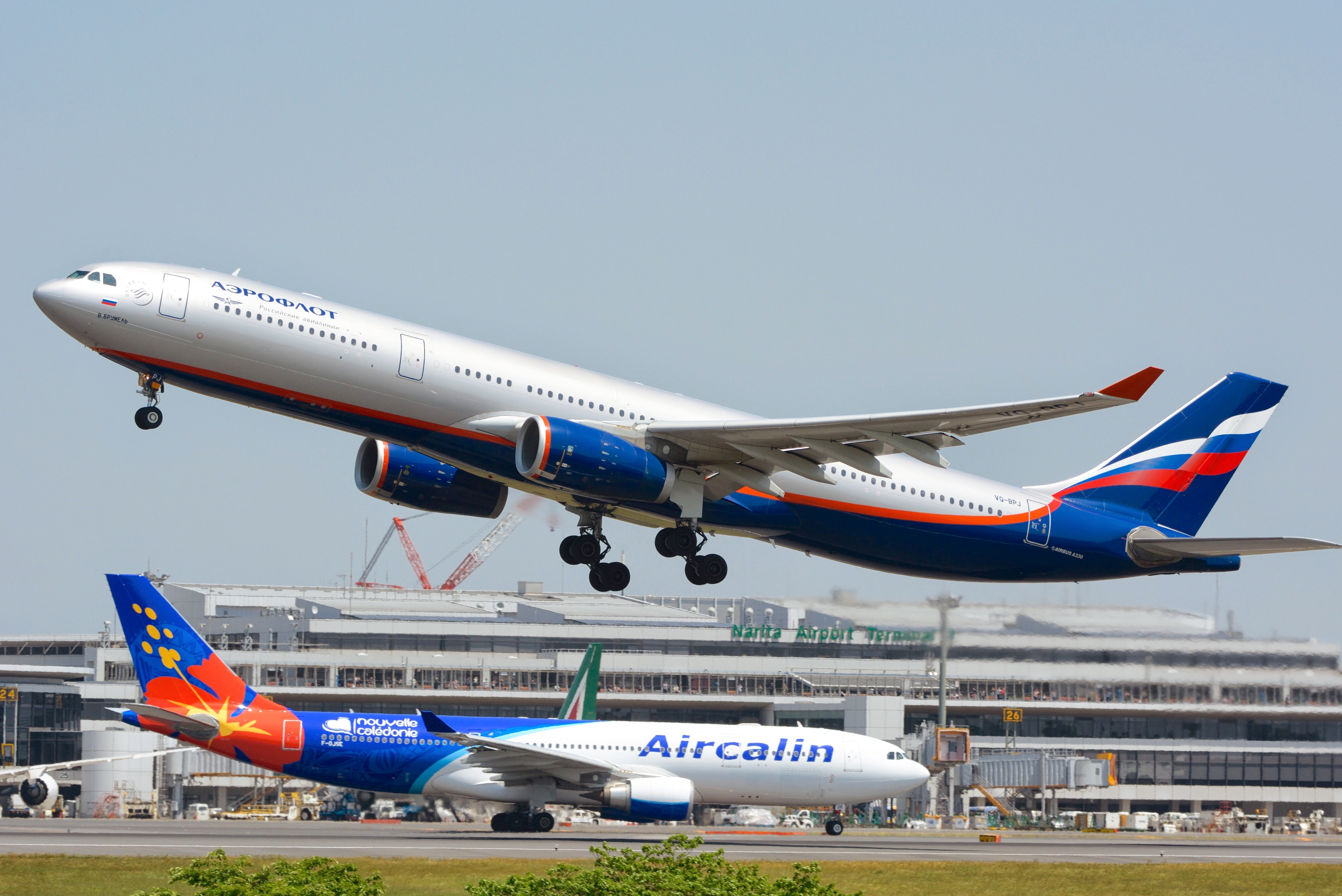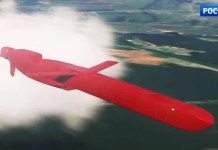Iran’s ability to maintain its commercial airline sector despite years of stringent Western sanctions has once again come into the spotlight. Last month, an operation saw Iran successfully smuggle two Airbus A340 aircraft out of Lithuania, a move that left the Western world stunned.
Reports reveal that the two planes departed from Šiauliai Airport in Lithuania earlier this year, originally slated to fly to Sri Lanka and the Philippines. However, both aircraft mysteriously diverted off course, disconnected from all means of detection by air traffic control, and ultimately landed in Iran.
The two Airbus A340s were intended to head to South Asia in February but ended up at Mehrabad International Airport in Tehran and Chabahar Konarak Airport, respectively. During their flights from Lithuania, the transponders on each plane, which enable aircraft to appear on radar systems, were switched off as soon as they entered Iranian airspace.
These planes belonged to the Gambian leasing company Macka Invest. A third A340 owned by the same Gambian company was stopped from departing Lithuania over fears it might follow the same route as the other two and is currently held at Šiauliai.
Aurelija Kuezada, director of Šiauliai Airport, commented on the incident: “The plane was due to fly to the Philippines, but we assume that it could have landed in Iran as well. Nothing could have prevented that. So we just didn’t let it go when we found out that the first plane had landed in Iran.”
Iran effectively smuggled the planes into the country, with Mahan Air claiming ownership of both aircraft. This maneuver was driven by the economic sanctions imposed by the US over Iran’s nuclear program, which prevented the nation from purchasing new planes.
Oro Navigacija, Lithuania’s state-owned navigation service provider, stated that none of the three planes had previously raised any suspicions. Their movement outside Lithuanian airspace was in compliance with the rules of air navigation service providers in other countries. However, the incident has caused significant concern among Lithuanian authorities.
Iran Unable To Buy New Aircraft
Iran’s aviation sector has long been hampered by outdated equipment and international sanctions, which have restricted its ability to acquire new aircraft. As a result, the country operates one of the oldest fleets globally, with airlines still relying on models such as the Airbus A300 and McDonnell Douglas MD-80.
The average age of Iran’s passenger planes is nearly 28 years, more than double the global average. Iran Air, the national carrier, continues to operate an Airbus A300 that is approaching 40 years of service.
Sanctions have specifically targeted the Iranian aviation industry by prohibiting the purchase of aircraft that include at least 10% US-manufactured parts.
This ban not only affects the acquisition of new Boeing jets but also impacts Airbus planes, which use American components and technology.

In a statement last year, Mohammed Mohammadi-Baksh, Head of Iran’s Civil Aviation Authority, underscored the severity of the situation, noting that Iran would need more than 370 new aircraft over the next few years to stabilize its aviation sector—a goal that seems nearly unattainable under current restrictions.
He further revealed that of about 330 registered aircraft in Iran, only around 180 are currently operational, leaving nearly half of the fleet grounded.
Iran briefly saw a glimmer of hope for fleet modernization in 2015 following the adoption of the Joint Comprehensive Plan of Action (JCPOA), a nuclear agreement that temporarily eased US restrictions on purchasing new aircraft.
During this period, Iran Air signed a $25 billion deal with Airbus for 118 commercial aircraft and another agreement with Boeing for 80 planes valued at approximately $17 billion.
Additionally, Tehran-based Aseman Airlines secured a $3 billion deal with Boeing for 30 new aircraft. An agreement with ATR also indicated a potential boost to Iranian aviation.
However, this window of opportunity was short-lived. The re-imposition of sanctions in 2018 led to the cancellation of these deals, with only 13 ATRs and three Airbus aircraft being delivered before the agreements were nullified.
This setback highlights the persistent challenges faced by Iran’s aviation industry and underscores the profound effect of geopolitical shifts on the country’s efforts to modernize its aging fleet.
Smuggling Aircraft: A Pattern Of Evasion By Iran
Smuggling entire aircraft into Iran has become a notable pattern of evasion by the country, with several high-profile cases illustrating this trend.
One of the most striking examples involves Bek Air, a Kazakhstan-based airline founded in 1999, which operated regular services from Oral Ak Zhol Airport (URA).
In 2017, Bek Air acquired two Airbus A340s from Olympic Air, which had been stored at Athens International Airport (ATH) for nearly a decade. After restoring the jets to flyable condition, Bek Air’s aircraft set off for Kazakhstan in February 2017.
However, instead of landing in Kazakhstan, they diverted to Tehran Mehrabad International Airport (THR). Once in Iran, both planes were promptly re-registered and entered service with Mahan Air, with one eventually sold to Syria’s Arab Airlines.
The incident led to a minor diplomatic stir, though Bek Air has not publicly commented or sought legal redress. The airline was stripped of its air operator’s certificate in 2020 due to unrelated safety violations, but no sanctions have been imposed on its founder, Nurbol Sultan, or others involved.
A less prominent case emerged in 2020 involving Tekh Innovatsiya, a company founded by Russian businessmen Sergey Sokolov and Nikolai Alehin.
Tekh Innovatsiya leased a Bombardier Challenger 600 business jet from a Bermuda-based company for three years. Allegedly, Sokolov bribed Galina Ceveleva, an employee at the Federal Agency for Air Transport (Rosaviatsiya), to forge ownership documents for $30,000.
Rosaviatsiya did not verify the aircraft’s ownership through international registers. Consequently, the jet was sold to Iran.
However, the sale process was delayed due to the COVID-19 pandemic. The original owner eventually noticed the aircraft’s disappearance and sued Tekh Innovatsiya in a Russian court. Sokolov was imprisoned, and the aircraft was seized pending the trial.
In December 2022, another notable instance occurred when four Airbus A340 planes departed from Johannesburg, South Africa, bound for Uzbekistan, changed course, and landed in Iran.
The aircraft’s transponders were switched off in a similar manner to the February 2024 incident, causing them to briefly disappear from radar before reappearing at Tehran’s Mehrabad International Airport.
Iran’s Sophisticated Smuggling Networks
Iran’s proficiency in circumventing international sanctions through complex networks of purpose-tailored companies is well-documented. Despite targeted efforts by the US and other nations to disrupt these networks, Iran has managed to maintain and even expand its aviation capabilities.
Numerous reports and investigations have uncovered a sophisticated model where fronts in countries such as the United Arab Emirates, Turkey, Cyprus, Germany, and Canada were used to route US-acquired parts to Iran.
Between 2011 and 2016, this elaborate scheme evolved into a comprehensive ecosystem with masterminds, supply chains, and a tightly-knit community of smugglers.
The 2015 Iran nuclear deal temporarily disbanded this system as sanctions were lifted and official aircraft orders took over. However, the US withdrawal from the deal in 2018 led to the reinstatement of sanctions and the resurgence of these smuggling networks.

Not all entities dealing with Iran’s aviation sector were shell companies or involved Iranians. Some were established in countries with no political alignment with the US, making enforcement challenging.
For instance, Flight Travel LLC, established in 2018 and owned by Armenian entrepreneur Bella Gevorgyan, provides travel management services, including ticket sales and tour organization.
In 2019, the US Department of Treasury (DoT) targeted the company, accusing it of acting as a General Sales Agent (GSA) for Mahan Air, an Iranian airline designated as a supporter of terrorism in 2011.
The DoT claimed Flight Travel LLC generated revenue for Mahan Air, leading to the freezing of its US assets. Gevorgyan argued that since Armenia had not sanctioned Iran, her actions were in full compliance with Armenian law.
Meanwhile, Moscow is also under pressure from international aviation sanctions and is looking towards Iran for lessons on how to keep an aging fleet operational with ersatz parts, random workarounds, and outsourcing aircraft maintenance jobs.
In April 2023, Russian carrier Aeroflot sent one of its Airbus jets to Iran for repairs, signaling a new level of cooperation between the two nations facing similar challenges.
The cooperation between Russia and Iran underscores the ongoing challenges in enforcing international sanctions and highlights the ingenuity of those determined to evade them.
- Contact the author at ashishmichel(at)gmail.com
- Follow EurAsian Times on Google News




